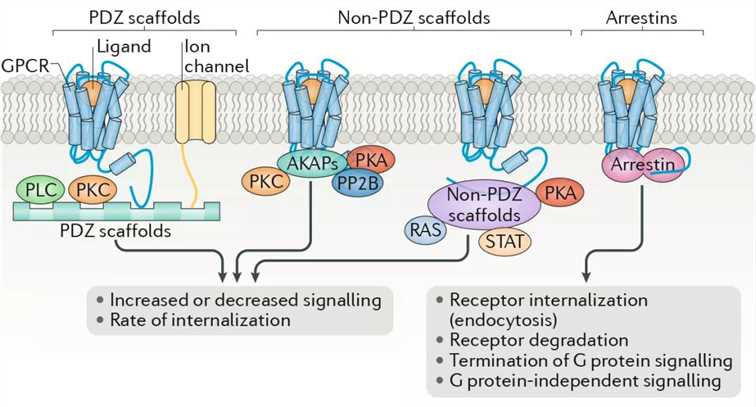GPCRs
G-protein-coupled receptors (GPCRs) are distributed in almost all human tissues and organs, which is the largest superfamily among the cell surface receptors. These receptors are involved in many physiological and pathological regulation pathways. They sense external stimuli and transmit extracellular information to cells, and eventually lead to subsequent cellular responses.
GPCRs have a variety of structures and functions and play an important role in signal transduction and cell regulation. For example, GPCRs can mediate the reactions of most cells to ions, photons, hormones, neurotransmitters, pheromones, odors, lipids, and large proteins. GPCRs are involved in the regulation of various physiological functions, such as odor, taste, vision, secretion, metabolism, nervous system regulation, immune response, cell differentiation, and embryonic development. Therefore, dysfunctions of GPCR lead to many diseases, such as diabetes, obesity, cardiovascular disease, neurodegenerative diseases, inflammation, and cancer, which makes GPCRs an essential drug target.
 Figure 1. GPCRs diversity (Wootten D, et al. 2018)
Figure 1. GPCRs diversity (Wootten D, et al. 2018)
In the past few years, cryogenic electron microscopy (cryo-EM) has become a cutting-edge method to determine the structures of GPCRs. Compared with X-ray crystallography, cryo-EM does not need to obtain three-dimensional crystals and can directly observe proteins in a variety of conformations in solution, which provides a deeper insight into the dynamic behavior of proteins.
We can cooperate with research institutions or companies to jointly analyze current potential target drugs. We believe that cryo-EM will play an increasingly important role in structure-based drug design, advanced structural characterization of biologic samples, and quality control during cold-chain transportation. So far, we have successfully solved the structures of multiple GPCR proteins, such as CD40, CD47, CD39, and CD73.
Our cryo-EM experts can assist you with every step in the GPCR structural analysis, including protein production, sample preparation, data collection and processing, and structural determination. If you are interested in our cryo-EM services for drug discovery, please feel free to contact us. We are looking forward to cooperating with you!
Ordering Process
Reference
- Wootten D, et al. Mechanisms of signalling and biased agonism in G protein-coupled receptors. Nature Reviews Molecular Cell Biology. 2018. 19(10): 638-653.

